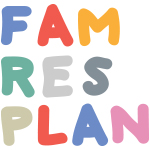Edukacijsko-rehabilitacijski
fakultet Sveučilišta u Zagrebu
[ Specifična obilježja
obitelji u riziku: doprinos planiranju
kompleksnih intervencija ]
Workshop “A room with a view – Using Images in Systemic Family Therapy”, April 7-8,2018, Zagreb (Croatia)
Tuesday, 10. April, 2018.
Rodolfo de Bernart, M.D. Psych. (Director: ITFF Florence, EFTA President, IASA President) held workshop in Zagreb and Anja Mirosavljević, team member, participated.
Workshop programme:
Seeing is as important as hearing to a family therapist, if not even more. As a matter of fact, only the comparison between what he/she can see and what he/she can hear makes a more complex comprehension of the familial communication possible. Since their training, the students are taught how to interpret the non-verbal language together with the verbal one and they are stimulated to observe the differences and the incongruous aspects. On this basis, it is then possible to build up relational hypothesis to work out and to verify in the session.
It is then clear why, since the beginning of the Family Therapy field, audiovisuals have held a significant place among the therapist’s tools, with important consequences even on the development of this therapeutic technique.
“If you want a therapist to be able to use correctly the analysis of the non-verbal language, you shall make him/her accustomed with the confrontation with it since the beginning of the training ” (Bodin, 1978).
If a therapist shall be able to find another image to suggest to the family instead of the “official” one showed in the session, he/she shall get accustomed to search what is not shown.
He/she shall also know at least some of the images of his/her own family very well, in order to be sure not to be always searching-finding them in the treated family (de Bernart, 1978).
This led me to the use of three audiovisual techniques in the first level (not clinical) of the training in order to supply the student with many images of the “normal” family so that he/she could then accept with appropriate flexibility all he/she should encounter in the future.
Too frequently, in fact, the concept of normal family is confined inside the student’s own family image or more frequently in the opposite image.
The first tool is the “Photographic Genogram”: the use of pictures, slides, 8mm films and video-recordings of familial events of the student’s family. The aim is not therapeutic but acknowledging: little space is left to judgements and a lot, on the contrary, to descriptions.
The multiplicity and variability of the norm is obtained just through the comparison among the different families.
The significant aspect of this method consists, in my opinion, in the “voyage” inside and outside of one’s own family, similar to the one that Bowen proposed to his students.
As a matter of fact, the student shall “return” to the family to get the pictures (with all the problems connected with this), then he/she shall choose among them and put them in order following his/her own criteria (first view), and finally show them to the group (second view) which will give a new interpretation of them based on a multiplicity of normality criteria (third view).
In this phase, an effective work of consciousness may be completed with a “geographical-historical” interview with the student’s family, which will clarify the methods of tri-generational transmission of the family’s culture and the student’s bounds and functional positions.
The use of films normally sold (Gladfelter, 1972) or of video-recorded theater plays, is the second instrument used in order to enlarge the concept of normality even further and to enter the other realities through images (de Bernart, 1987). The films, moreover, are never shown entirely, but only some rather short parts of them. The students shall then train and build up the characters’ stories from these little sequences. Thus, since the beginning they get accustomed with the activity of imagining familial stories starting from those little news that the families bring in the session.
But to watch does not yet mean “to be able to watch”, it is necessary, as underlined by Angelo (1987), to acquire a method of observation, to choose what you want to observe, because not all what is perceptible is equally significant.
And one shall include him/herself in the observation’s field, that is develop the ability to use on ourselves as interacting subject the same analysis scheme used to detect significant aspects in others’ relationships.
Each one of us, as it is still remarked by Angelo, makes use of a perceptive method and a personal organizing structure.
The collage is a third method of approaching the “inside of a couple or of a family. It is a very simple technique and reduce in a significant way the time needed to get important information for therapy and training.
Nowadays we have a catalogue of more than fifty “Active Visual Techniques”, which we can use in Psychotherapy, so that is difficult to still think to Psychotherapy as a “only spoken” approach.
We will explore in these two days the theorical reasons to use images in Systemic Therapy and Training and we will do a quick trip along many of these techniques (1st day).
We wll also experiment with the group some of them (Collages, Photographic Genogram, 3D Genogram, Test Images of Art and others) (2nd day).

